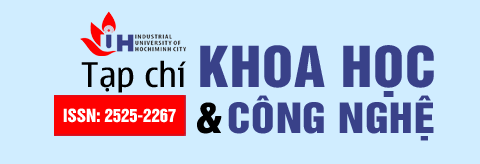TOXICITY OF (Cu2+, Pb2+) SPIKED SEDIMENT ON EMBRYOS AND LARVAE OF CRASSOSTREA GIGAS : SEDIMENT IN SOAI RAP ESTUARY, SAIGON- DONGNAI RIVER
Main Article Content
Abstract
Heavy metals in sediments adversely affect to the benthic organisms. Such effects can rarely be predicted from data based on total concentrations of metals in sediments because the influence of their chemical species in the sediments is different. To assess the potential adverse effects of Cu and Pb pollutants in the sediment, the toxicity test model was used, in which the eluent solution of the Cu2+, Pb2+ striked sediments were exposed with the Crassostrea gigas oyster embryo, larvae. The model is carried out in 3 stages: (i) Preparation of (Cu2+, Pb2+) spiked sediment samples; (ii) Preparation of eluent solutions from standard spiked sediment samples and (iii) Toxicity test on Crassostrea gigas embryos and larvae by eluent solutions. Parameters such as failure embryo rate, larval abnormality rate and EC50 values were determined. The results showed that the EC50 values of sperm, egg, both sperm and egg were estimated to be 0.024; 0.063; 0.034mg L-1 for Cu and 4.7; 14.0, 5.5 mg L-1 for Pb; The rate of abnormal larvae after 24 hours was 0.015 mg/L for Cu and 2.88 mg L-1 for Pb. The results suggested that Cu toxicity was higher than Pb and eggs were less susceptible than sperm. The research results can be used to predict the sensitivity levelS of Cu and Pb in Soai Rap estuary sediments on embryos and larvae of Crassostrea gigas oysters.

